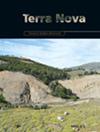Did mid‐Ediacaran regional sea‐level drawdown trigger extensive allochthonous salt breakout and the incision of kilometre‐deep palaeocanyons, Flinders Ranges, South Australia?
IF 2.2
3区 地球科学
Q2 GEOSCIENCES, MULTIDISCIPLINARY
引用次数: 0
Abstract
The Ediacaran Period is of interest for the emergence of multicellular life, one or more glaciations, and the occurrence of the largest δ13C excursion in Earth history (the Shuram). The Ediacaran stratigraphic succession in the Flinders Ranges of South Australia is distinctive also for well‐exposed outcrop examples of palaeocanyons and salt diapirs. We present data placing a level of salt‐sheet breakout during deposition of the Wonoka Formation, within the time span of the Shuram, and at a datum indistinguishable from the canyon incision level. We hypothesize that canyon incision and salt breakout were triggered by subaerial erosion and non‐deposition associated with sea‐level drawdown in a temporarily isolated embayment. This mechanism provides support for the idea that the palaeocanyons were fluvially incised, and imposes a new constraint on the palaeoenvironmental setting of Australia at the time of the Shuram and the Ediacara fauna.埃迪卡拉纪中期的区域海平面下降是否引发了南澳大利亚弗林德斯山脉大面积的异源盐破裂和数公里深的古峡谷内切?
埃迪卡拉纪因出现了多细胞生命、一次或多次冰川以及地球历史上最大的 δ13C 偏移(舒拉姆)而备受关注。南澳大利亚弗林德斯山脉的埃迪卡拉纪地层演替也因古峡谷和盐层断裂带的良好露头而独具特色。我们提供的数据表明,在 Wonoka Formation 沉积期间,盐层断裂的程度与 Shuram 的时间跨度相同,其基准点与峡谷切入程度无异。我们推测,峡谷切口和盐层断裂是由与海平面下降有关的次生侵蚀和非沉积引发的,而海平面下降则是在一个暂时与世隔绝的海湾中发生的。这一机制支持了古峡谷被河水侵蚀的观点,并为 Shuram 和埃迪卡拉动物群时期澳大利亚的古环境背景提供了新的约束。
本文章由计算机程序翻译,如有差异,请以英文原文为准。
求助全文
约1分钟内获得全文
求助全文
来源期刊

Terra Nova
地学-地球科学综合
CiteScore
4.80
自引率
8.30%
发文量
59
审稿时长
2.3 months
期刊介绍:
Terra Nova publishes short, innovative and provocative papers of interest to a wide readership and covering the broadest spectrum of the Solid Earth and Planetary Sciences. Terra Nova encompasses geology, geophysics and geochemistry, and extends to the fluid envelopes (atmosphere, ocean, environment) whenever coupling with the Solid Earth is involved.
 求助内容:
求助内容: 应助结果提醒方式:
应助结果提醒方式:


